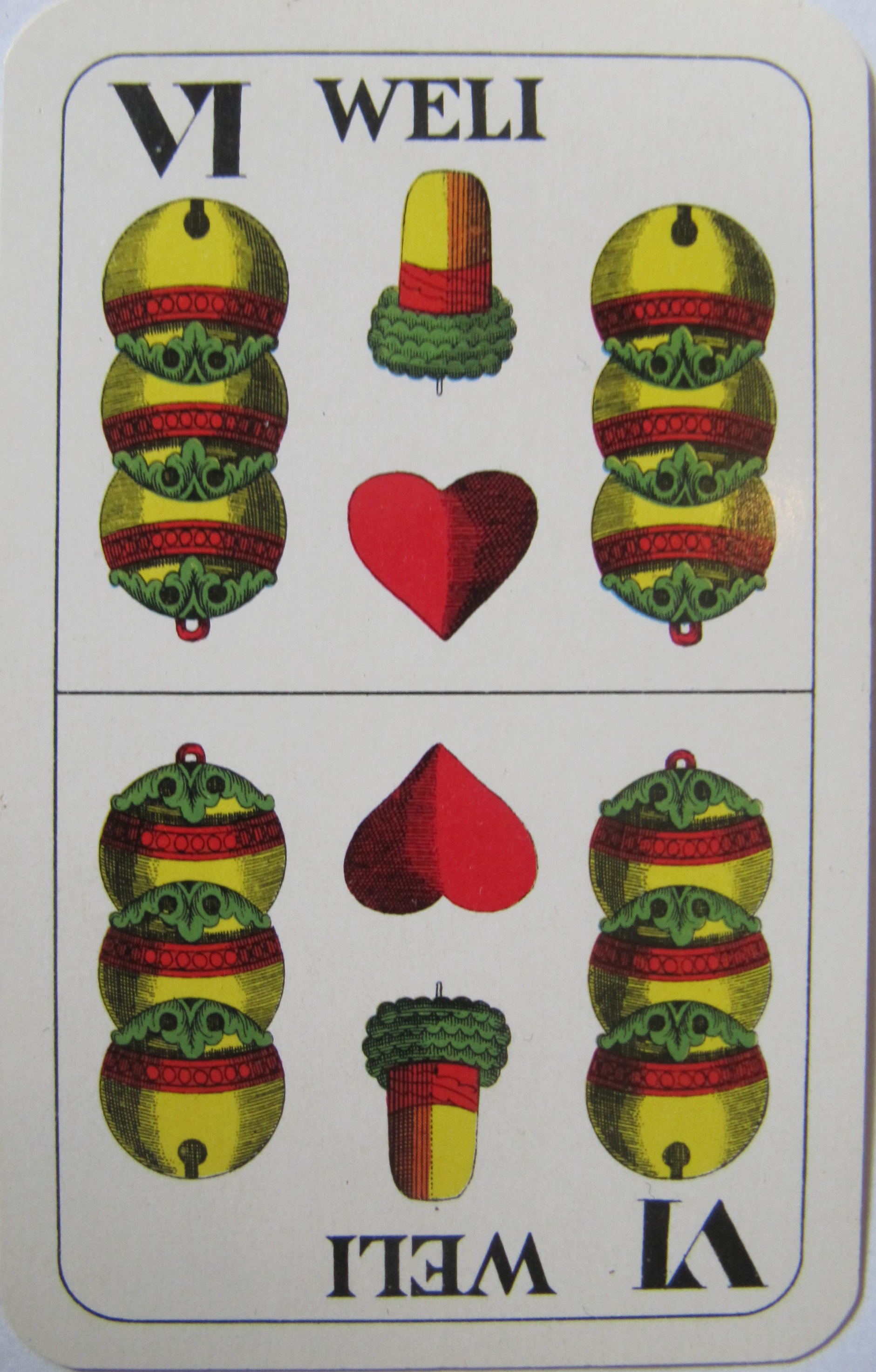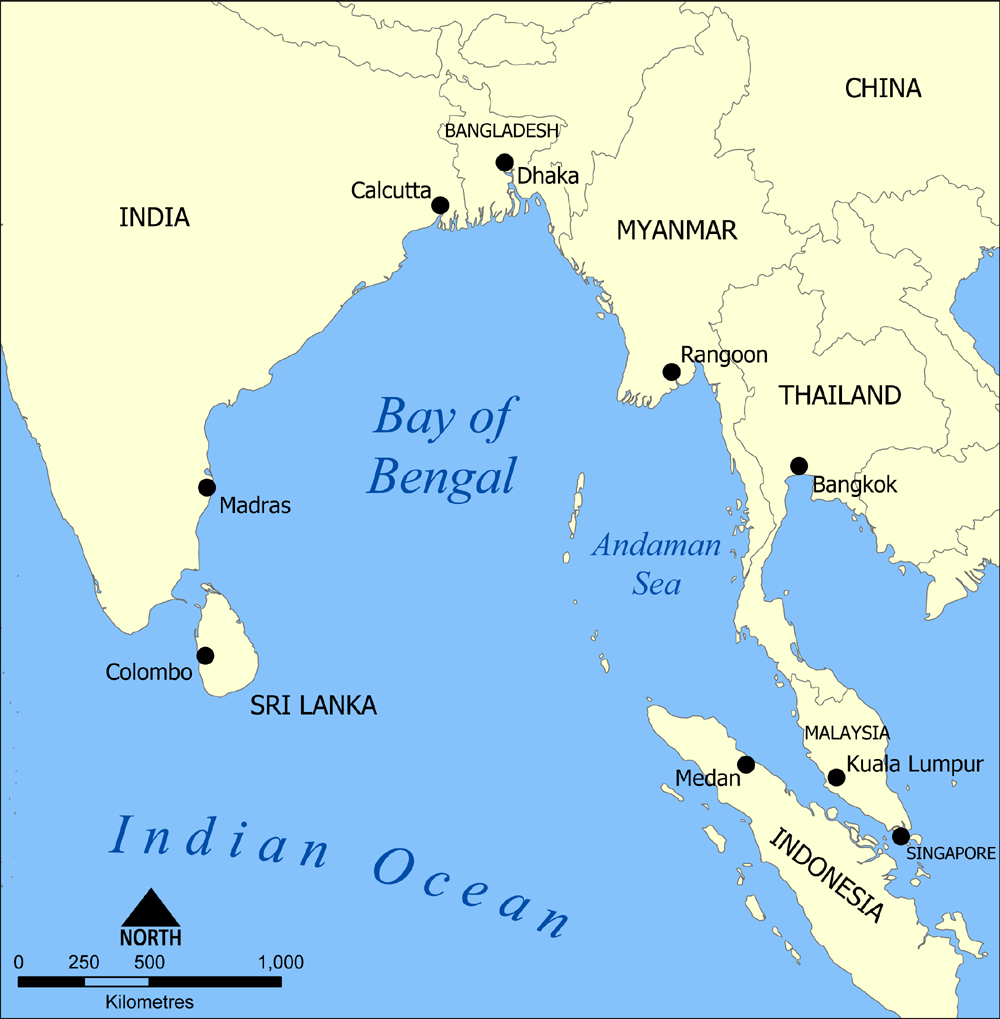|
Watten (card Game)
Watten, regionally also called ''Watteln'' or ''Wattlung'', is a card game that is mainly played in Bavaria, Austria, Switzerland and South Tyrol. There are several main variants: Bavarian, Bohemian, South Tyrolean (''Stichwatten''), (Austrian) Tyrolean, Kritisch and Blind Watten. It is usually a 4-player game, which is "by far the most interesting", but it may also be played by 2 or 3 players. According to Parlett, Watten is "hard to describe" but "fun to play and easy to learn." Origin According to tradition the game emerged in its present form in the Kingdom of Bavaria during the time of the Napoleonic Wars. At that time, allied French and Bavarian troops spent their spare time together in their military encampments. The name came from the French phrase, va tout, which meant "last trump". However, Tyrolean historian, Hans Fink, believes the game originated in formerly Austrian South Tyrol and came from the Italian word ''battere'', "beating" or "thumping". [...More Info...] [...Related Items...] OR: [Wikipedia] [Google] [Baidu] |
Plain-trick
A trick-taking game is a card or tile-based game in which play of a ''hand'' centers on a series of finite rounds or units of play, called ''tricks'', which are each evaluated to determine a winner or ''taker'' of that trick. The object of such games then may be closely tied to the number of tricks taken, as in plain-trick games such as contract bridge, whist, and spades, or to the value of the cards contained in taken tricks, as in point-trick games such as pinochle, the tarot family, briscola, and most evasion games like hearts. Trick-and-draw games are trick-taking games in which the players can fill up their hands after each trick. In most variants, players are free to play any card into a trick in the first phase of the game, but must ''follow suit'' as soon as the stock is depleted. Trick-avoidance games like reversis or polignac are those in which the aim is to avoid taking some or all tricks. The domino game Texas 42 is an example of a trick-taking game that is not a ca ... [...More Info...] [...Related Items...] OR: [Wikipedia] [Google] [Baidu] |
Eichel (card Suit)
Acorns (German: ''Eichel'', or more unusually ''Hackl'' or ''Ecker'') is a suit in a deck of German playing cards or Swiss playing cards. This suit was invented in 15th-century German-speaking lands and is a survivor from a large pool of experimental suit signs created to replace the Latin suits. Around 1480, French card makers adapted this sign into clubs in a French deck (known as clovers in France). In English, cards are referred to as in a French deck (e.g. the "10 of Acorns"), but in German as ''Eichel-Zehn''. Acorns are the highest suit in the games of Skat, Schafkopf and Doppelkopf, but the lowest in Préférence. In Watten, the 7 of Acorns (the ''Spitz'' or ''Soach'') is the third highest trump card. The gallery below shows a suit of Acorns from a German-suited deck of 32 cards. The pack is of the Saxonian pattern: File:Saxonian Deck - Acorns - 07.jpg , 7 File:Saxonian Deck - Acorns - 08.jpg , 8 File:Saxonian Deck - Acorns - 09.jpg , 9 File:Saxonian Deck - Acorns - 10 ... [...More Info...] [...Related Items...] OR: [Wikipedia] [Google] [Baidu] |
Cut (cards)
In card games, to cut the cards (also "cut the deck" or "cut the pack") is to split the deck into two packets by lifting one packet from the top and placing it face down beside the remainder; before placing the lower packet on top of it. This is typically done after the cards have already been shuffled, and the procedure is used just prior to the cards being dealt to the players. The aim of this is to reduce the possibility of cheating, for example, by knowing the bottom card. Cutting the cards is also a common way of determining the seating order at a card table, the partnerships or the first dealer. Purpose The practice of cutting is primarily a method of reducing the likelihood of someone cheating by manipulating the order of cards to gain advantage. Even if the dealer (or the shuffler, if he is not the dealer) does not plan on cheating, cutting will prevent suspicions, thus many rules require it. Some players also consider the cut to be lucky. Parlett says the purpose of cu ... [...More Info...] [...Related Items...] OR: [Wikipedia] [Google] [Baidu] |
Dealer (card Player)
Card players are those participating in a card game. Various names are given to card players based on their role or position. Position Games of Anglo-American origin In games of Anglo-American origin played in English-speaking countries, age refers to the order of priority in which players make the first lead, bid or bet, based on their position at the table.''The Language of Cards'' at www.parlettgames.uk. Retrieved 4 August 2018 This changes constantly as the dealer rotates either clockwise or anticlockwise around the table. They are traditionally referred to as follows: ; Eldest hand (or elder hand): the player who enjoys greatest priority and e.g. is the first to receive cards in the deal. Elder is the non-dealer in two-hand games. ; Youngest hand (or younger hand): the player who has the lowest p ... [...More Info...] [...Related Items...] OR: [Wikipedia] [Google] [Baidu] |
Shuffled
Shuffling is a procedure used to randomize a deck of playing cards to provide an element of chance in card games. Shuffling is often followed by a cut, to help ensure that the shuffler has not manipulated the outcome. __TOC__ Techniques Overhand One of the easiest shuffles to accomplish after a little practice is the overhand shuffle. Johan Jonasson wrote, "The overhand shuffle... is the shuffling technique where you gradually transfer the deck from, say, your right hand to your left hand by sliding off small packets from the top of the deck with your thumb." In detail as normally performed, with the pack initially held in the left hand (say), most of the cards are grasped as a group from the bottom of the pack between the thumb and fingers of the right hand and lifted clear of the small group that remains in the left hand. Small packets are then released from the right hand a packet at a time so that they drop on the top of the pack accumulating in the left hand. The process ... [...More Info...] [...Related Items...] OR: [Wikipedia] [Google] [Baidu] |
Trump Suit
A trump is a playing card which is elevated above its usual rank in trick-taking games. Typically, an entire suit is nominated as a ''trump suit''; these cards then outrank all cards of plain (non-trump) suits. In other contexts, the terms ''trump card'' or ''to trump'' refers to any sort of action, authority, or policy which automatically prevails over all others. Etymology The English word ''trump'' derives from '' trionfi'', a type of 15th-century Italian playing cards, from the Latin '' triumphus'' "triumph, victory procession", ultimately (via Etruscan) from Greek θρίαμβος, the term for a hymn to Dionysus sung in processions in his honour. ''Trionfi'' was the 15th-century card game for which tarot cards were designed. ''Trionfi'' were a fifth suit in the card game which acted as permanent trumps. Still in the 15th century, the French game ''triomphe'' (Spanish '' triunfo'') used four suits, one of which was randomly selected as trumps. It was this game that became ... [...More Info...] [...Related Items...] OR: [Wikipedia] [Google] [Baidu] |
Weli
The ''Weli'', formerly ''Welli'', is a playing card used in the Salzburg and William Tell card decks, which are Austrian regional patterns of the German-suited playing cards. It has the value of 6 of Bells and, in the South Tyrol variant of the card game, Watten, it is the only 6 used and can, in addition to its own suit of Bells, join the trump suits of Acorns, Hearts and Leaves. In all other variants of Watten, the 7 of Bells is the ''Weli''. History The ''Weli'' is also often called the ''Welli'' or ''Belli'' and, dialectically, the ''Wöli'', ''Wöüli'', ''Bölle'' or ''Belle''. The name ''Weli'' probably comes from the Italian word ''belli'', which means "bells". Historically the ''Weli'' is first recorded in the early 1850s, when a Bozen card manufacturer inscribed ''WELLI'' onto the six of bells. As early as 1855, the ''Weli'' was integrated in the Salzburg pattern as the 6 of Bells. The gravestone appearing in many depictions is probably the grave of the Apostle Pau ... [...More Info...] [...Related Items...] OR: [Wikipedia] [Google] [Baidu] |
Maximilian I Joseph Of Bavaria
Maximilian I Joseph (german: Maximilian I. Joseph; 27 May 1756 – 13 October 1825) was Duke of Zweibrücken from 1795 to 1799, prince-elector of Bavaria (as Maximilian IV Joseph) from 1799 to 1806, then King of Bavaria (as Maximilian I Joseph) from 1806 to 1825. He was a member of the House of Palatinate-Birkenfeld-Zweibrücken, a branch of the House of Wittelsbach. Early life Maximilian, the son of the Count Palatine Frederick Michael of Zweibrücken-Birkenfeld and Maria Francisca of Sulzbach, was born on 27 May 1756 at Schwetzingen, between Heidelberg and Mannheim. After the death of his father in 1767, he was left at first without parental supervision, since his mother had been banished from her husband's court after giving birth to a son fathered by an actor. Maximilian was carefully educated under the supervision of his uncle, Duke Christian IV of Zweibrücken, who settled him in the Hôtel des Deux-Ponts. He became Count of Rappoltstein in 1776 and took service in 17 ... [...More Info...] [...Related Items...] OR: [Wikipedia] [Google] [Baidu] |
Bay Schellen
A bay is a recessed, coastal body of water that directly connects to a larger main body of water, such as an ocean, a lake, or another bay. A large bay is usually called a gulf, sea, sound, or bight. A cove is a small, circular bay with a narrow entrance. A fjord is an elongated bay formed by glacial action. A bay can be the estuary of a river, such as the Chesapeake Bay, an estuary of the Susquehanna River. Bays may also be nested within each other; for example, James Bay is an arm of Hudson Bay in northeastern Canada. Some large bays, such as the Bay of Bengal and Hudson Bay, have varied marine geology. The land surrounding a bay often reduces the strength of winds and blocks waves. Bays may have as wide a variety of shoreline characteristics as other shorelines. In some cases, bays have beaches, which "are usually characterized by a steep upper foreshore with a broad, flat fronting terrace".Maurice Schwartz, ''Encyclopedia of Coastal Science'' (2006), p. 129. Bays were sig ... [...More Info...] [...Related Items...] OR: [Wikipedia] [Google] [Baidu] |
Bay Herz
A bay is a recessed, coastal body of water that directly connects to a larger main body of water, such as an ocean, a lake, or another bay. A large bay is usually called a gulf, sea, sound, or bight. A cove is a small, circular bay with a narrow entrance. A fjord is an elongated bay formed by glacial action. A bay can be the estuary of a river, such as the Chesapeake Bay, an estuary of the Susquehanna River. Bays may also be nested within each other; for example, James Bay is an arm of Hudson Bay in northeastern Canada. Some large bays, such as the Bay of Bengal and Hudson Bay, have varied marine geology. The land surrounding a bay often reduces the strength of winds and blocks waves. Bays may have as wide a variety of shoreline characteristics as other shorelines. In some cases, bays have beaches, which "are usually characterized by a steep upper foreshore with a broad, flat fronting terrace".Maurice Schwartz, ''Encyclopedia of Coastal Science'' (2006), p. 129. Bays were sig ... [...More Info...] [...Related Items...] OR: [Wikipedia] [Google] [Baidu] |
Bay Gras
A bay is a recessed, coastal body of water that directly connects to a larger main body of water, such as an ocean, a lake, or another bay. A large bay is usually called a gulf, sea, sound, or bight. A cove is a small, circular bay with a narrow entrance. A fjord is an elongated bay formed by glacial action. A bay can be the estuary of a river, such as the Chesapeake Bay, an estuary of the Susquehanna River. Bays may also be nested within each other; for example, James Bay is an arm of Hudson Bay in northeastern Canada. Some large bays, such as the Bay of Bengal and Hudson Bay, have varied marine geology. The land surrounding a bay often reduces the strength of winds and blocks waves. Bays may have as wide a variety of shoreline characteristics as other shorelines. In some cases, bays have beaches, which "are usually characterized by a steep upper foreshore with a broad, flat fronting terrace".Maurice Schwartz, ''Encyclopedia of Coastal Science'' (2006), p. 129. Bays were sig ... [...More Info...] [...Related Items...] OR: [Wikipedia] [Google] [Baidu] |
Bay Eichel
A bay is a recessed, coastal body of water that directly connects to a larger main body of water, such as an ocean, a lake, or another bay. A large bay is usually called a gulf, sea, sound, or bight. A cove is a small, circular bay with a narrow entrance. A fjord is an elongated bay formed by glacial action. A bay can be the estuary of a river, such as the Chesapeake Bay, an estuary of the Susquehanna River. Bays may also be nested within each other; for example, James Bay is an arm of Hudson Bay in northeastern Canada. Some large bays, such as the Bay of Bengal and Hudson Bay, have varied marine geology. The land surrounding a bay often reduces the strength of winds and blocks waves. Bays may have as wide a variety of shoreline characteristics as other shorelines. In some cases, bays have beaches, which "are usually characterized by a steep upper foreshore with a broad, flat fronting terrace".Maurice Schwartz, ''Encyclopedia of Coastal Science'' (2006), p. 129. Bays were sig ... [...More Info...] [...Related Items...] OR: [Wikipedia] [Google] [Baidu] |










